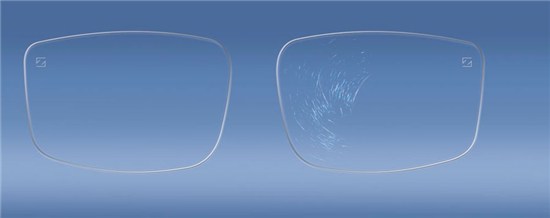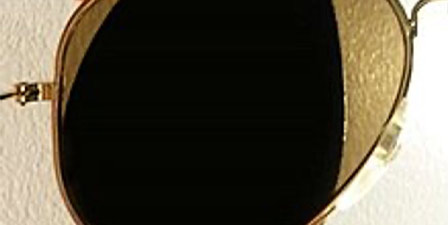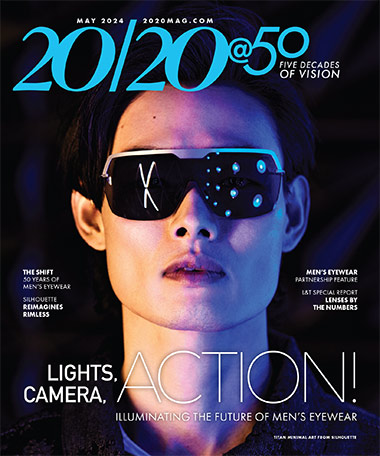HARD COATING IN PRODUCTS AROUND YOU
Coatings are applied to a variety of surfaces to increase abrasion and scratch resistance. Plastics can be used in many applications where bare substrate alone would not survive. Originally developed in the 1970s, coatings are one of the original nanoscience technologies. First developed to impart glasslike surfaces on plastic materials, the original applications were used in mass transit. In the 1980s, hardcoatings were used on polycarbonate aircraft canopies for fighter planes. Many of the hardcoats that are used on today's ophthalmic lenses had their origins in these aerospace hardcoats.
Hardcoats are also used in the construction industry for polycarbonate and acrylic glazing, security glazing in architecture and vehicles, window films, headlamps, sunroofs, bus and rail windows, and on many gauges in transportation and industrial equipment. Additionally, features such as impact enhancement and anti-fog performance are used in sports and safety eyewear, as well as in sunglass lenses.
FEATURES AND BENEFITS
Hardcoatings can provide more than enhanced abrasion resistance. A hardcoating is selected by determining what additional features are desired. It is not always possible, however, for one coating to provide all of these features. So, it is necessary to prioritize requirements and select a coating that provides the best balance that answers needs. Lens manufacturers and coating laboratories make selections to improve and balance the properties of the lens substrate materials as well as the anti-reflective coatings that may be applied to the lens afterward. Coating features can be broken down as follows, refer to the illustration of possible coating layers:

The better the hard coat, under the AR, the better the overall scratch and abrasion resistance.
Here the left image shows the difference between excellence in hard and AR coating durability delivers scratch free lenses.
Image, Carl Zeiss Vision
Durability: Hardcoatings increase the life of a lens. Durability is improved by abrasion, chemical and impact resistance.
Scratch and Abrasion Resistance: While the main features of most hardcoatings, scratch resistance and abrasion resistance are often used interchangeably. Technically, scratch resistance refers to the ability to withstand damage from a sharp object that comes in contact with a lens surface. Abrasion resistance, on the other hand, is the ability to withstand wear from the rubbing of an object, such as a cleaning cloth, shirt sleeve or paper towel, across the surface. Chemical formulation as well as application has an effect on coating thickness and the degree of chemical cross-linking, which in turn has an effect on scratch and abrasion resistance.
AR Durability Performance: The percentage of AR coated lenses is growing in North America (now on average approaching a third of all lenses). This is in part due to improvements to the AR coatings as well as improvements to the hardcoats under the AR. It is always recommended to use a good hardcoat underneath an AR coating. AR returns are greatly reduced by the use of compatible hardcoating on both the front and back surface and in general, thermal cure coatings provide the best foundation for an AR coating. Both the adhesion and abrasion resistance of the AR coating are greatly improved through the use of a good hardcoat.
Primers for Improved Performance: Often, hardcoating performance can be enhanced by the use of a primer applied to the lens surface under the hardcoat. Primers can be used to improve surface adhesion as in the use of a primer to obtain adhesion to polycarbonate. Primers are also used to increase tintability because the primer holds the tint dyes when used in conjunction with a permeable coating. Last Lastly, primers help to increase the impact resistance of a coated lens by acting as a rubbery material that halts the migration of a crack.
Impact Absorption: Hardcoatings and AR coatings typically make a lens more brittle and as a result, decrease the impact resistance of a lens. By using a soft primer, or cushion coat, the energy of impact is absorbed through the primer on the back surface, where cracks are most often initiated preventing cracks from propagating through the lens. The use of cushion coat primers is increasing, as the volume of AR coatings, the use of more brittle substrates and the design of thinner lenses increase.
Tintability: Hardcoatings are used to permit tinting of a non-tintable substrate. Some substrates, such as CR-39, can be tinted without the use of a hardcoat. Polycarbonate requires the use of a hardcoat to tint the lens. Tintable coatings work through both permeation and the ability to hold a dye. Because there is a limit as to how much dye a hardcoat can actually hold, it is often necessary to use a tintable primer with the hardcoat. This allows some dye to be held by the hardcoat and some dye to be held by the primer enhancing final tintability.
Index Matching: The demand for thinner and lighter lenses has led to an increase in mid- and high-index substrate usage. Most hardcoats index of refraction closely matches that of hard resin (1.49). When the index of refraction of the coating matches that of the substrate this eliminates the reflections from the light passing through the interface of coating to lens. If there is a mismatch between hardcoat refractive index and lens refractive index, the result is birefringence.

Birefringence appears as a rainbow pattern on the lens surface. If the coating and lens have the same index of refraction, the light passing through "sees" the two as one continuous substrate and the reflections at the interface are minimized. As the use of higher index substrates has increased, so has the availability of higher index coatings.
Antifog: Antifog coatings have become popular on industrial safety and sports eyewear. The antifog performance can be achieved through either surface moisture absorption or sheeting the moisture across the surface. Premium antifog coatings combine abrasion resistance, chemical resistance and antifog performance previously not possible. However, some may still be softer than the hardcoats that have become the norm in the market. See Nanofilm and Essilor for antifog lenses and treatments.












